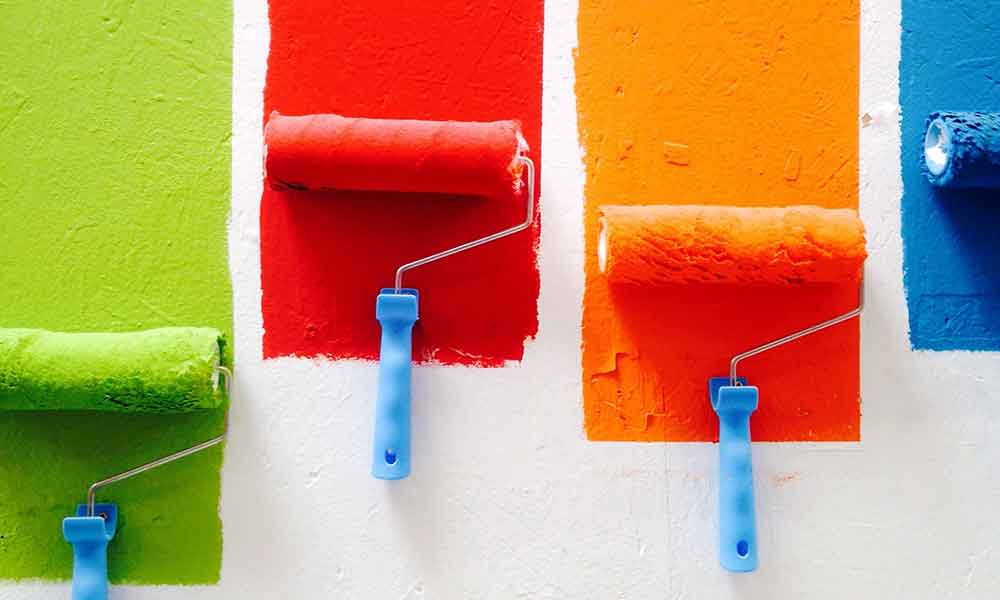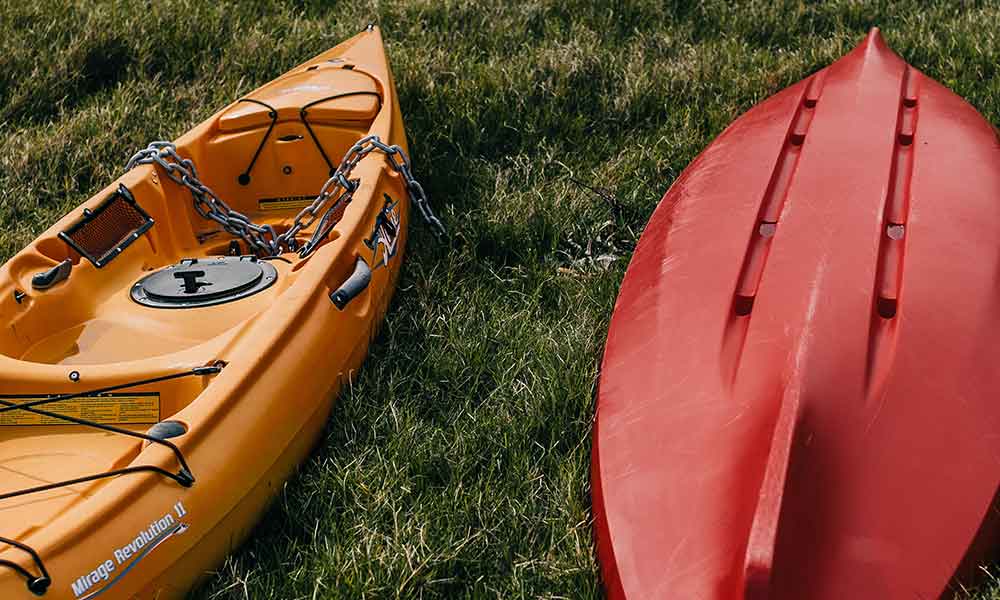Having a hole or crack in your kayak is never a fun experience, especially when you’ve planned an exciting day of kayaking! Luckily, there are some good ways that you can utilize to patch your kayak so that you’ll find yourself kayaking in no time! Let’s look at fixing your kayak.
You can patch your kayak by getting some No. 2 HDPE plastic, welding it onto the kayak hole, reinforcing it with wire mesh, and adding a third layer of No. 2 HDPE plastic. Then, leave it to dry for twenty-four to forty-eight hours. It will make it 99 percent waterproof, and it is a temporary fix.
Understanding how to patch your kayak is vital for any avid kayaker. You’ll prepare yourself for emergencies and unexpected incidents. Additionally, it’s a wonderful investment in your safety and those of your loved ones.
How To Patch A Kayak
Most people use marine patches for their kayaks, but they can quickly become pricey. Fortunately, there’s a budget-friendly alternative known as plastic welding.
A Quick Rundown Of Your Needs, And Why
To start, you’ll want to find a detergent bottle, milk carton, or bucket from home depot because they contain the same kind of plastic (No.2 HDPE plastic) as your kayak. Cut yourself a sizeable flat piece with heavy-duty scissors or shears – preferably the bottom of a bottle or the lid of a bucket – then you’re going to weld three layers onto the hole.
The first layer will involve covering the hole in the kayak with plastic. The second layer entails laying down some wire mesh onto the first plastic layer to give it strength, integrity, and durability. Finally, the third layer is another layer of plastic that will provide it with fantastic waterproofness.
As such, you’re going to need:
- A flat piece from a detergent bottle, milk carton, or bucket from home depot
- Heavy-duty scissors or shears
- A welding iron
- Wire mesh
- Vice grips
- Pocket knife
Step 1
Melt down the plastic and use it to cover up any holes or cuts in the hole of your kayak, allowing water to enter. It ensures the right amount of waterproofing so that no water gets in and gives the rest of the patch some extra-needed reinforcement.
The reinforcement is necessary because if you were to lay the rest of the patch over an open hole, it’s likely going to cave in due to the water pressure. Ensure that you cover the entire hole without missing any edges; otherwise, they may act as weak points for the water to penetrate through.
When the plastic is completely dry, it’s time to move onto the second layer, applying the wire mesh.
Step 2
The wire mesh will help to give it some shape and strength for when you apply the third layer meant for additional waterproofing. Applying the wire mesh is pretty straightforward, but a few steps will undoubtedly make the experience a little bit easier and safer.
On that note, always prioritize safety first, ensuring that you wear gloves because the welding iron is scalding! Once you move past the red handle, it can quickly and unexpectedly burn you, causing severe harm to your person. Without gloves, the chances of burning yourself are highly likely, because the gloves give you time to pull away.
Secondly, ensure that you’re continuously cleaning the tip of the welding iron. If it starts becoming black, it indicates that the material you’re melting is fusing to the end of the tool. You can easily clean it off using the wire brush that comes with the welding tool; you’ll know it’s clean when it has a shiny sparkle to it.
Before the plastic, I melded it together with the layer below it. If you make sure the tip stays clean, you’ll guarantee yourself the best bond as you continue to melt the plastic together and patch the kayak. Additionally, it will be in your best interest to use vice grips.
Use the vice grips to hold the plastic in place, and once you have it primarily secured to the layer that its over-top of, you can manipulate it around with a small pocket knife until
Step 3
When you apply the last layer of plastic, ensure that the patch has evenly applied plastic; that there are no unusual bumps (because that’s where water will get in). Mainly, ensure that the patch’s edges appear flushed with the actual hole. Consequently, water won’t enter through the edges, and thus it will be well-protected from water.
Remember that this is a temporary solution; neither is it 100 percent waterproof (you may notice a couple of water drops). The only way, really, to get a permanent fix is to get a new hull. However, the more plastic you use, the tighter the seal will be and the longer the solution will hold.
How Do You Find A Plastic Kayak Leak?
Typically, the way to go about checking for leaks in your kayak is by conducting a pressure test of sorts.
A Quick Rundown And What You’ll Need To Check For A Leak
In order to do that, we’ll need the following things:
- water out of a water hose
- some liquid dish detergent
- something that can lift the kayak in its middle to provide a pivot point
- A bucket
- A coconut (or something that permits the kayak to tilt forward)
Typically, there are several areas at the bottom of the kayak that you can visually inspect to see if there is anything amiss. You may take check the keel on the bow and stern; those generally get rubbed through from getting dragged along the ground. Furthermore, areas like the hatch can lose their seals.
They can all be weak points if you’re using through-holes wheels. Scupper holes are weak points on kayaks, especially the older models, and the plastic will start to become brittle. In other places where you drilled holes through the housing to attach your equipment, it can become a leak in the future.
Step 1
Start by getting the kayak on a backward-tilt and placing the bucket into the kayak. While filling the bucket with water, insert enough liquid dish detergent into the bucket so that it starts foaming. The water will flow to the back half of the kayak and enable you to check the rear parts for any leaks.
Step 2
Once the kayak tilts forward, the soapy water will follow suit, finding and revealing leaks in the kayak. Since the water is soapy, it will be relatively easy to spot the leak by where the water on the ground is situated. When you’ve checked all your leaks, remove the plug and drain out the remaining water.
Can You Use Flex Seal On A Kayak?
If you need to do an emergency kayak repair, and you have a Walmart near you, it could be worth considering Flex Seal. As per the instructions on the can, you need to leave it to dry for 24 to 48 hours after you’ve applied it.
Before starting, ensure that you are wearing face and eye protection at all times because the chemicals in the product can be harmful if you inhale it in any way, shape, or form.
Step 1
Ensure that the area you’re going to apply the Flex Seal to is clean and dry. When you spray, use it eight to twelve inches from the surface in an even, sweeping motion and shake well before using it. Keep spraying until you’re confident that you’ve covered the entire area of the hole, then let it dry for up to 24 to 48 hours, depending on the hole’s size.
It may not be a permanent solution, but Flex Seal works well enough to last you at least a day or even more, depending on the kayak and environmental factors.
How Do You Fix A Punctured Inflatable Kayak?
There are some things that you can use to patch up an inflatable kayak, but perhaps one of the cheapest methods is to utilize a little bit of gorilla glue. You don’t need any additional tools to apply it effectively.
Step 1
Start by cleaning and drying the area around the hole to avoid debris affecting the patching materials. Put some gorilla glue on the hole on the inflatable kayak, and rub it into the affected area using a circular motion until the hole has succumbed entirely to the gorilla glue. Don’t be shy to add more glue if the whole is larger than usual.
Step 2
Wait up to 24 hours for the gorilla glue to dry. When the gorilla glue has settled for long enough, it will create a hard-white substance to indicate its wholly dried and ready to use. The gorilla glue creates a reliable air-tight seal that ensures it will remain waterproof.
What Is A Cheap Method To Protect Your Kayak’s Hull?
It’s no secret that obstructions in the water, such as bridge pylons or rocks, can cause kayaks to take a considerable beating. Additionally, the barnacles on said pylons are not kind to the plastic of your kayak.
The most reliable and budget-friendly method for installing hull protection offers a solution that works well when you’re out on the water and is easy to replace whenever you are required. In this case, an inexpensive garden hose that you can purchase pretty much anywhere is more than capable of fulfilling this purpose.
You’ll want to run the garden hose around the perimeter of the kayak, using tape to adhere it to the kayak and ensure it stays firmly in place. Gaff tape may seem like an optimal solution, but the cloth allows water to get to the adhesive, stripping the garden hose off the kayak.
Good ol’ fashion gorilla duct tape is what you need to ensure that the garden hose remains firmly attached to the kayak. Getting the broad, three-inch version would be preferable for optimal results. Before applying duct tape to the kayak, wipe it down and ensure no oils or resins can interfere with its holding capacity.
Place a square every two feet to ensure the tape covers enough of the garden hose. You’ll want to put the hose on the part of the kayak that protrudes the most. Then, take a rag and put some alcohol on it, cleaning the area where you’re going to attach the hose (wipe the hose too, if you want to be extra sure). Then, go ahead and attach the hose respectively.
After attaching the hose with the squares of gorilla tape, use longer stretches of tape to tape over the remaining areas of the garden hose completely. Then, run an additional course just above the garden hose for extra protection. Remember to tape the front of the kayak thoroughly because it is bound to take a good amount of abuse.
Should You Wax The Bottom Of Your Kayak?
Even if your kayak is quite robust, it will eventually show signs of wear and tear. But it’s not all doom and gloom. You can do a number of things to help your craft last longer and look its best.
An extra layer of protection against damage is always good for your kayak, such as using kayak wax. Kayak wax can assist in the preservation of fiberglass or composite hull. It might increase the hull’s longevity by protecting it from the sun’s damaging rays, as well as scratches and dents.
You may not need to apply a kayak wax if your watercraft consists of plastic or polyethylene, as kayak wax is primarily for composite kayaks. You may, however, use a protective coating to give it an extra layer of UV protection and aid in enhancing the hull’s color.
It’s vital to preserve your yak with a decent wax, but it’s also crucial to keep it clean. Remembering to rinse off your yak after each paddling session, especially if you’ve been paddling in saltwater, will help maintain your yak in good form.
Conclusion
With a trusty welder, a detergent bottle, milk carton, or bucket from home depot, you’ll have all you need to have a reliable way of patching your kayak.







